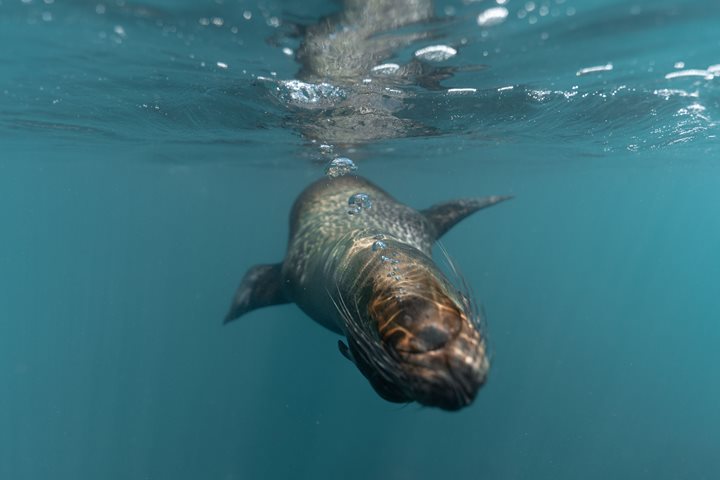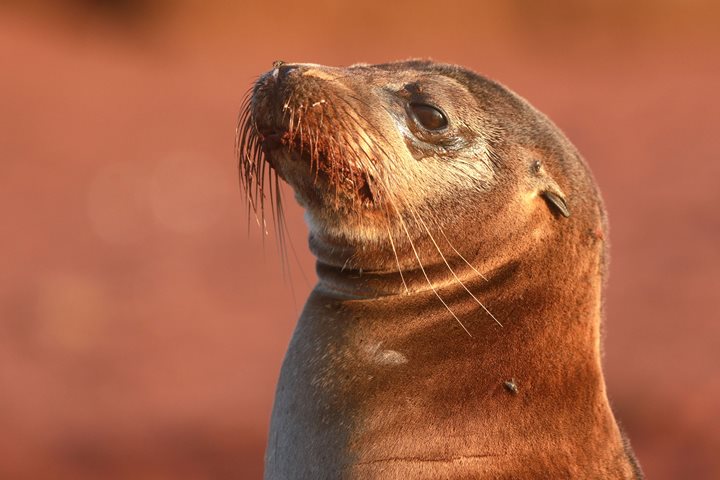This journey has taken us from the oldest islands within the archipelago west, towards the newest and most volcanically active islands. As we awake at Sombrero Chino we are surrounded by tuff and spatter cones with a dark basaltic lava flow. The turquoise waters surround us as we start our exploration of the surrounding area and the undersea realm. Penguins flit among us as they fish, and we are surrounded by a three dimensional world of sharks, fish, rays, and colorful sea stars. A short navigation brings us directly to a metallic black lava flow which we venture over in all of its glory, surrounded by volcanic cones. As the sun dips we encounter Galapagos penguins finishing their day by landing and drying off in the late afternoon sun.
- Daily Expedition Reports
- 05 Jan 2018
Sombrero Chino & Santiago Islands, 1/5/2018, National Geographic Islander
- Aboard the National Geographic Islander
- Galápagos
Jason Heilmann, Undersea Specialist
Growing up in northern California, Jason was surrounded by the incomparable nature of the Pacific Northwest. While attending university there, Jason met and eventually married an Ecuadorian woman who happened to be from a small group of islands off t...
Read MoreShare Report
Related Reports
11/23/2022
Read
National Geographic Islander II
Isabela and Fernandina
Our day began with the chance to point out a lot of interesting geological features as we enjoyed Zodiac tours along a massive flank of Ecuador Volcano on Punta Vicente Roca. In the afternoon, we took a sunny walk on Punta Espinoza on Fernandina Island. We spotted many iguanas, and a bunch of sea lions hanging around, too.
11/22/2022
Read
National Geographic Islander II
North Seymour & Rabida Islands
Relatively small and low compared to neighboring Santa Cruz, North Seymour is located to the north of Baltra. The island is dry with predominantly low shrubs, like prickly pear cacti. The incense trees are bare during the dry season. Seabirds like frigatebirds and blue-footed boobies nest on the island, and sea lions rest on the sand when they are not fishing. Land and marine iguanas also live here. Rabida is in the middle of the archipelago and has a striking red sand beach. We observed a small colony of sea lions of all ages resting or nursing. Behind the beach, American flamingos nest in a brackish lagoon. This island is full of contrasts and wildlife that we enjoyed observing during this day of expedition.







